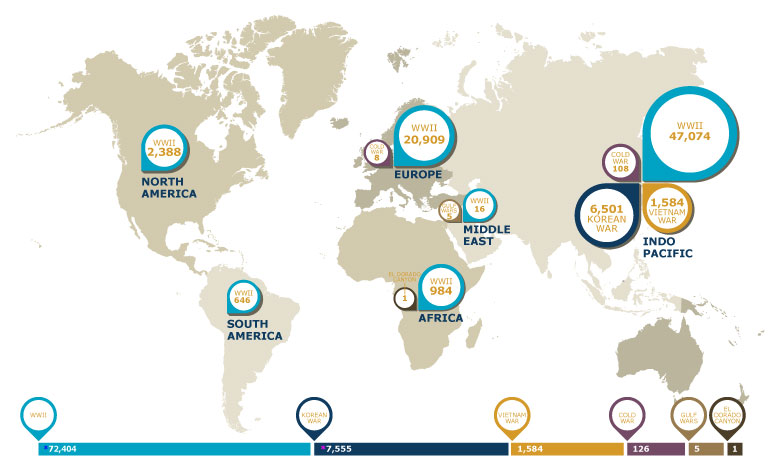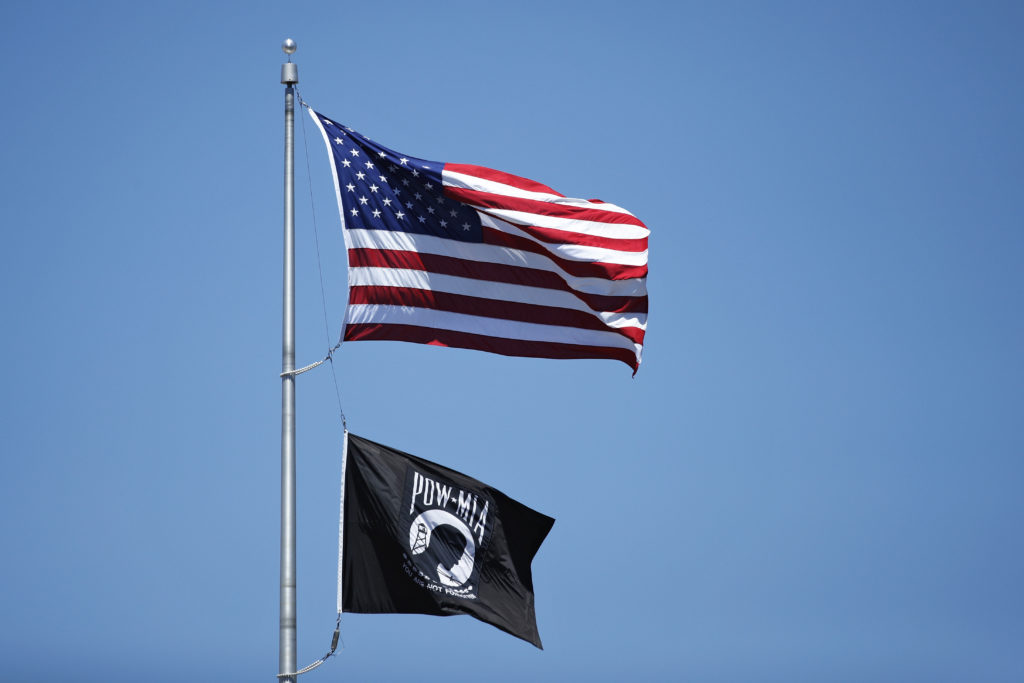Three Things to Know About POW/MIA Day
The key phrase behind the national POW/MIA remembrance movement, which honors Soldiers who were taken as prisoners of war and those who are still missing in action, is “you are not forgotten.”
Many American service members suffered as prisoners of war during varying conflicts- while some made it home to their families, many never did. Continue reading to learn more about this important movement and how you can help recognize it.
What is POW/MIA Recognition Day?
POW/MIA Recognition Day is commemorated on the third Friday of every September, a date that’s not associated with any particular war. In 1979, Congress and the president passed resolutions making it official after the families of the more than 2,500 Vietnam War POW/MIAs pushed for full accountability.
A national-level ceremony is held on every National POW/MIA Recognition Day. Traditionally held at the Pentagon, it features members from each branch of military service and participation from high-ranking officials. In addition to the national-level ceremony, observances of National POW/MIA Recognition Day are held across the country on military installations, ships at sea, state capitols, schools and veterans’ facilities. All of these National POW/MIA Recognition Day ceremonies share the common purpose of honoring those who were held captive and returned, as well as those who remain missing.
How Many Soldiers are Prisoners of War or Missing in Action?
In order to comprehend the importance of this movement, all you need to do is look at the overwhelmingly large number of Americans who have been listed as POW/MIAs.

The Defense POW/MIA Accounting Agency indicates more than 81,600 Americans remain missing from WWII, the Korean War, the Vietnam War, the Cold War, and the Gulf Wars/other conflicts. Out of the more than 81,600 missing, 75% of the losses are located in the Indo-Pacific, and over 41,000 of the missing are presumed lost at sea (i.e. ship losses, known aircraft water losses, etc.).
This includes:
- 72,404 missing Soldiers from WWII
- 7,555 missing Soldiers from the Korean War
- 1,584 missing Soldiers from the Vietnam War
- 126 missing Soldiers from the Cold War
- 5 missing Soldiers from the Gulf Wars
Efforts to find those men, identify them and bring them home are constant. For example, the DPAA said that in the past year it has accounted for 41 men missing during the Korean War: 10 had been previously buried as unknowns, 26 were from remains turned over by North Korea in the 1990s, one was from a recovery operation, and four were combinations of remains and recovery operations.
According to the Defense POW/MIA AcAccording to a Congressional Research Service report on POWs:
- 30,201 World War II service members were imprisoned; 14,072 them died
- 7,140 Korean War service members were imprisoned; 2,701 of them died
- 725 Vietnam War service members were imprisoned; 64 of them died
- 37 service members were imprisoned during conflicts since 1991, including both Gulf wars; none are still in captivity
The Creations of the POW/MIA Flag
Few know that the official POW/MIA flag was actually created many years before the remembrance day became official.

In 1971, Mrs. Michael Hoff, the wife of Navy Lt. Cmdr. Michael Hoff who was listed as missing in action during the Vietnam War after his plane was shot down over Laos, developed the idea for a national flag to remind every American of the U.S. service members whose fates were never accounted for during the war.
World War II pilot Newt Heisley designed the now-famous flag, which was made in black and white to represent the sorrow, anxiety and hope symbolized by the image of the gaunt man featured on it. Some claim the silhouette is a profile of Heisley’s son, who contracted hepatitis while training to go to Vietnam. The virus ravaged his body, leaving his features hallow and emaciated. They suggest that while staring at his son’s sunken features, Heisley saw the stark image of American servicemembers held captive under harsh conditions. Using a pencil, he sketched his son’s profile, creating the basis for a symbol that would come to have a powerful impact on the national conscience.
For every POW/MIA Recognition Day since 1982, the flag has flown just below the stars and stripes at the White House – the only other flag to ever do so. In 1998, Congress ordered it to also be displayed on Armed Forces Day, Memorial Day, Flag Day, Independence Day and Veterans Day.
If you enjoyed this content, please give a gift to the ASOM to help us continue our mission of educating the public on the legacies of U.S. Airborne and Special Forces Soldiers.



